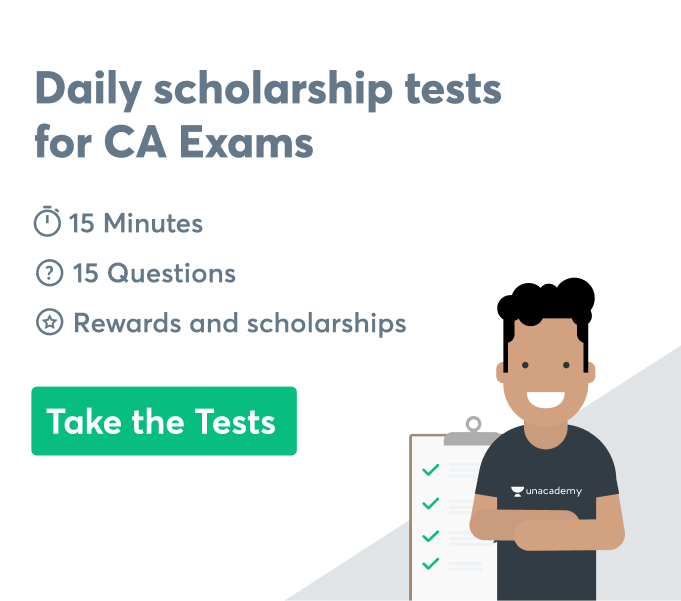A partnership is a type of business where 2 or more persons cooperate to be co-owners, share the work of running an organisation and split the profits or failures that the business makes. This is called a written agreement. Every part of a partnership in India is regulated by the “Indian Partnership Act 1932.” This law says that partnerships are made up of two or more people or groups who agree to share the profits from their business with each other or on behalf of other members. There are 3 types of partnership.
1. Limited partnership
2. General partnership
3. Limited Liability Partnership
Q1 What is the responsibility of partners in a partnership organisation?
- Unlimited
- No Liability
- Limited to the capital of business
- Limited
Answer: 1. Unlimited
Explanation:
Everyone who works for a partnership firm has a lot of responsibility for the business. Everyone who takes on any responsibilities and liabilities should pay back everyone else who took on the responsibilities and liabilities. It is everyone’s responsibility to have no limits on risk in an organisation.
Q2 When does the direct debit to partner’s capital a/c entry made in accounts?
- Interest on Drawings is charged.
- Investment is made
- Capital is withdrawn
- Drawings are made
Answer-: 1. Interest on Drawings is charged
Explanation:
At this stage, the Interest on Drawings Account is credited, and the Partner’s Capital Account is debited. It is referred to as a transitional area. Changing sections is usually done at the end of the year to save money on labour and costs.
Q3 What percentage of the partners’ capital is charged interest on without a partnership deed?
- 6 % Per annum
- 12 % Per annum
- 14 % Per annum
- No interest is levied
Answer: 4 No interest is levied.
Explanation:
In a partnership firm without a partnership deed, no interest is charged on the partners’ capital.
Q4 In the absence of a partnership agreement, how will the earnings be split among the partners?
- Equal
- Depending on the capital invested.
- Unequal
- Depending on the work experience.
Answer: 1 Equal
Explanation:
A partnership document specifies that profits and losses accrued by the company are shared among the partners. However, if the partnership deed is kept private, all partners share in the profits and losses equally.
Q5 Which of the partnership firm’s accounts cannot record rent paid to partners?
- Depreciation Account
- Expenses Account
- Profit & Loss Account
- Salary Account
Answer: 3 Profit & Loss Account
Explanation:
A partnership’s P&L account will not include rent paid to partners.
Q6 What is a partner in profits only?
- A person who gives some money to a business but doesn’t play a big role in running it.
- A person who has a stake in the partnership and is involved in the day-to-day running.
- An 18-year-old partner
- A partner who gets into an agreement to share only the profits of the partnership firm and not the losses.
Answer: 4 A partner who gets into an agreement to share only the profits of the partnership firm and not the losses
Explanation:
This partner will only receive a share of the company’s profits; he will not be liable for any losses. He will be solely accountable for any proof of fairness when dealing with third parties, and he will bear no responsibilities whatsoever.
Q7 To which loan account should the balance be transferred if a partner lends or advances money?
- Partner’s Liability Account
- Partners’ Capital Account
- Balance Sheet Assets Side
- Balance Sheet Liability Side
Answer: 4 Balance Sheet Liability Side
Explanation:
Any loan or advance given by a partner will be recorded as a liability on the balance sheet.
Q8 In what kind of relationship does one partner have known risk, and the other has limited obligation?
- Particular Partnership
- Limited Liability Partnership
- General Partnership
- Partnership At will provide no reason
Answer: 2 Limited Liability Partnership
Explanation:
A general partner in a Limited Liability Partnership (LLP) firm bears the sole and unrestricted risk of the whole LLP (s). On the other hand, restricted accomplices have limited risk, which implies their resources cannot be used to meet business commitments and liabilities. To what extent are they obligated based on their interest in the LP.
Q9 In a partnership firm, what are some of the following features?
- They are sharing profits and losses in a fixed ratio.
- Two or more persons are carrying common business under an agreement.
- Business is carried by all or any of them acting as an agent.
- All of these.
Answer: 4 All of these.
Explanation:
In India, the Indian Partnership Act 1932 governs partnership-based businesses. As defined in Section 4 of this Act, an association is a relationship between two or more people who have agreed to enjoy the benefits of the association, either as a group or individually.
Q10 What form of relationship does not have a long-term partnership agreement?
- Limited Liability Partnership
- Particular Partnership
- Partnership At will
- General Partnership
Answer: 3 Partnership At will
Explanation:
A partnership at being is a business arrangement in which the partners are free to continue their activities at their own pace, without regard to the passage of time or any other external factors. It has no bearing on when or how the corporation will decide.
Q11When does the Partnership Act enters into force in a firm?
- Whenever there is a disagreement between the people who work for the company.
- if the money you put in isn’t equal
- When interest is charged on a drawing, it is called a drawing.
- In the absence of Partnership Deed
Answer: 4 In the absence of Partnership Deed
Explanation:
When a firm does not have a partnership deed, the Partnership Act of 1932 kicks in.
Q12 Exactly what is a “Personal Partnership”?
- Partners can act like partnerships and corporations at the same time.
- Partnership wherein some or all are the same.
- A partnership was formed for a single transaction.
- This is how partnerships work under the law.
Answer: 3 A partnership was formed for a single transaction
Explanation:
A partnership can be formed for a long-term business venture, or it is more likely to be formed for a single project or endeavour. Specific associations are those formed for a specific purpose, such as accomplishing a single task or goal.
Q13 Which of the following is not included in the Partnership Act of 1932?
- Interest has to be charged on all drawings.
- All of the loans given out will have a fixed interest rate.
- No interest can be earned on money that is invested.
- In business, profit and loss are to be split evenly.
Answer: 1 Interest has to be charged on all drawings
Explanation:
Partnership Act 1932 does not comprise the term that Interest has to be charged on all drawings.
Q14 Entering into a partnership deed in a Partnership Firm is?
- Necessary in Writing
- Necessary
- Verbal
- Not Necessary
Answer: 4 Not Necessary
Explanation:
Forming a partnership agreement in the partnership firm is not required by the Partnership Act of 1932.
Q15 In a partnership firm, which of the following is not a feature?
- Mutual Consent
- Equal Profits
- Easy Formation
- Limited Liability
Answer: 4 Limited Liability
Explanation:
A partnership firm does not have limited liability because the partners have unlimited liability.
Q16 Inside a partnership, each member is linked to satisfying his/her __ in the company or organisation?
- Partnership Deed
- Meetings
- Rights
- Duties
Answer: 4 Duties
Explanation:
Every partner is obligated to carry out his or her duties to the company.
Q17 In the lack of a partnership agreement, which of the following rules governs the partnership firm?
- Partner pay is determined by how much they make.
- Six per cent Interest on Drawings: The profit sharing ratio is the same.
- No interest shall be charged on capital
- All
Answer: 3 No interest shall be charged on capital
Explanation:
No interest will be levied on the partnership firm’s capital because no partnership deed is in place.
Q18 What is Partnership Firm Agreement?
- Partnership Act
- Partnership Deed
- Agreement
- Partnership Contract
Answer: 2 Partnership Deed
Explanation:
A partnership agreement is a written agreement between the partners of a company that outlines the terms of their partnership. It shows the distinct phrases like advantage sharing, pay, interest on capital, draws, and the affirmation of an accomplice.
Q19 Contract in which form is required in a partnership firm?
- Oral
- Written
- A or B
- None
Answer: 3 A or B
Explanation:
A partnership act of kindness is an agreement between the people who work together in a company. It shows how the people who work together set up the company. An affiliation firm is one of the most common ways to start a new business.
Q20 Collaborators in a company will still get Interested in Money if supplied in the partnership agreement, but just out of which account?
- Assets
- Reserves
- Profits
- Goodwill
Answer: 3 Profits
Explanation:
Interest on Capital is only paid to participants in a partnership from the profit account if it is specified in the partnership agreement.
 Profile
Profile Settings
Settings Refer your friends
Refer your friends Sign out
Sign out






